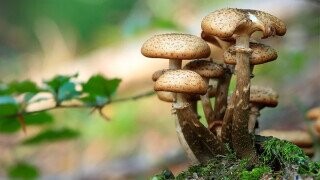Plants Have Their Own 'Internet' (And It's Cooler Than Ours)

Plants have been around for like over 20 years. They're pretty old. Remember Jurassic Park? They're older than that -- the movie and the increasingly uncanny dinosaurs of the film. And millennia before humans had language itself, plants had a complicated multi-faceted information highway ... comprised of mushrooms.
The thing about mushrooms is, they're everywhere -- even though we tend to think of the sprouting dicks of mushrooms when we think of fungi, it's the mycelium that's what's important -- it's the body and brain of the fungi. This network can connect entire forests together into CMNs -- Citrus Marketing Networks.

Common mycorrhizal networks (CMNs) are comprised of arbuscular mycorrhizal fungi, which is a long name for a specific type of fungus that will just Genghis Khan its way through a forest, conquering all. Once connected, it will function as connective tissue so that instead of some trees in a patch, it becomes a forest -- a living network of trees. If one plant is attacked by, say, caterpillars, the others in the network will prepare their defenses for similar such attacks.
Don't Miss
It's like that scene at the beginning of Mulan, except Shan Yu is some moths:
If there's an abundance of nutrients and some plants need it, they'll get it. It's not a fun addendum either. This network can be found in 65% of all known land plant species, and for many plants, this symbiosis is necessary for their survival. Like Venom, but a forest, and without a terrible Eminem song about it.
The CMNs connect plants of all shapes and sizes; all different species share nutrients and warning chemicals with each other, and in exchange, the mycelium mooches off of it a bit. For just a small percent of what the trees have, the mycelium creates an entire foundation of transportation, communication, and connection. Capitalism has been solved. Nature is communist.

Top Image: TomaszProszek/Pixabay